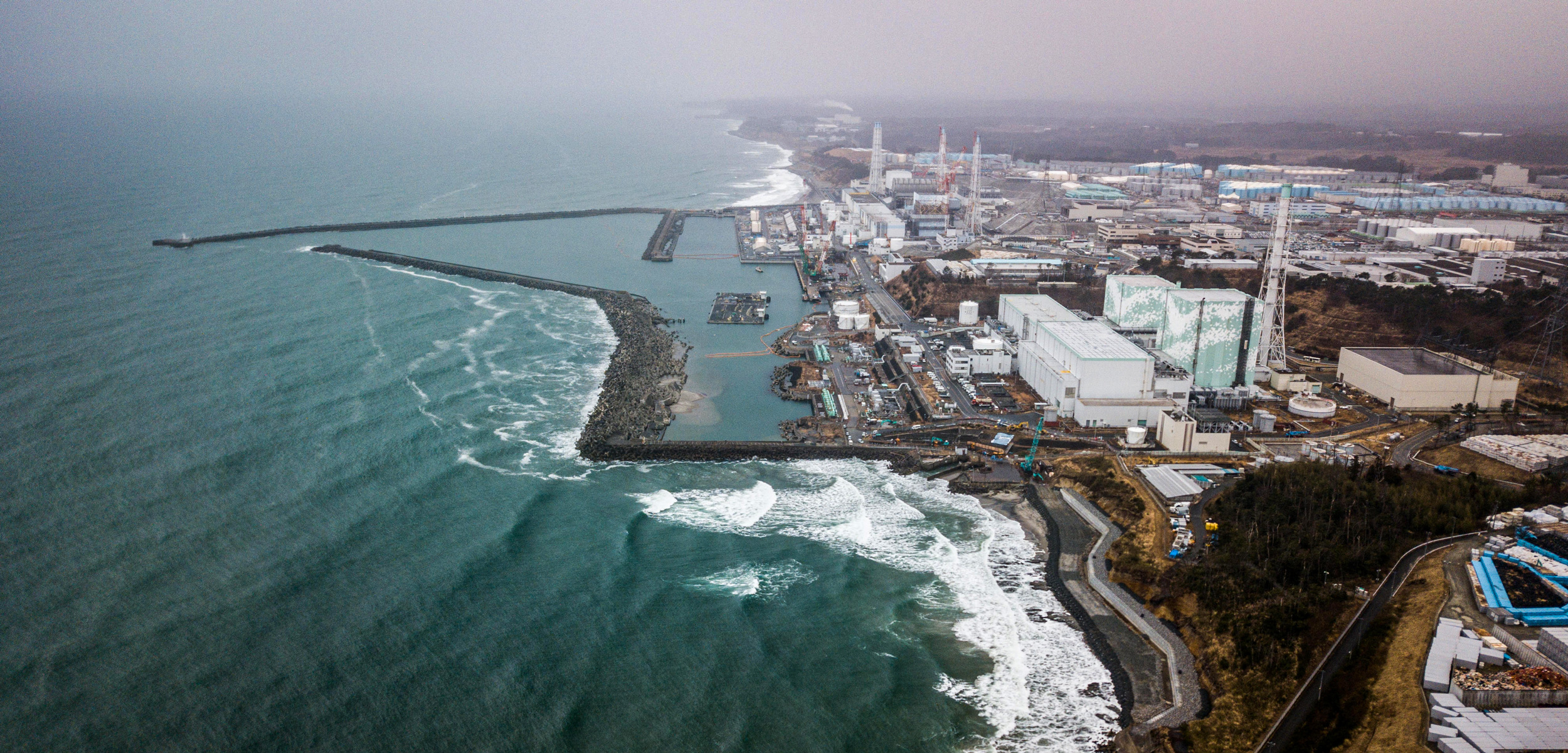
Welcome to this comprehensive article that will take you on a journey through 41 fascinating facts about Fukushima. Located in Japan, Fukushima is a city that gained global attention in 2011 due to the devastating nuclear disaster that occurred at the Fukushima Daiichi Nuclear Power Plant. However, Fukushima is more than just a place of tragedy; it is a resilient city with a rich history, natural beauty, and a vibrant community. In this article, we will delve into various aspects of Fukushima, from its cultural heritage and breathtaking landscapes to its ongoing efforts in recovery and rejuvenation. Whether you are a history buff, nature lover, or simply curious about this remarkable city, these 41 facts will provide you with a deeper understanding of Fukushima’s past, present, and future. So, join us as we explore the captivating world of Fukushima!
Key Takeaways:
- The Fukushima disaster in 2011 led to a nuclear accident, forcing thousands to evacuate and sparking global concerns about nuclear safety and environmental impact.
- The cleanup and decommissioning of the Fukushima Daiichi plant will take decades, highlighting the long-term challenges and impacts of nuclear accidents.
The Fukushima Daiichi Nuclear Power Plant is located in the Fukushima Prefecture of Japan.
Located on the eastern coast of Honshu Island, it is one of the largest nuclear power plants in the world.
The Fukushima disaster occurred on March 11, 2011.
A massive earthquake and tsunami severely damaged the power plant, leading to a nuclear accident.
The disaster resulted in the release of radioactive materials into the atmosphere and ocean.
It is considered the most significant nuclear accident since the 1986 Chernobyl disaster.
Fukushima is classified as a level 7 event on the International Nuclear Event Scale.
This is the highest level of severity for nuclear accidents.
The evacuation zone around Fukushima covered approximately 20 kilometers in radius.
Tens of thousands of people were forced to leave their homes and communities.
The Fukushima disaster led to a global reevaluation of nuclear energy safety.
Many countries revised their nuclear energy policies and implemented stricter safety measures.
The cleanup and decommissioning process at the Fukushima Daiichi plant is expected to take several decades.
It is a complex and challenging task due to the high levels of contamination.
The Fukushima disaster raised concerns about the long-term health effects of radiation exposure.
Efforts have been made to monitor and mitigate the health risks for affected individuals.
The contaminated water from the Fukushima plant has been a major environmental issue.
Efforts are underway to treat and safely store the water before its release into the ocean.
Fukushima Prefecture is known for its beautiful landscapes and rich cultural heritage.
It is home to historic temples, hot springs, and scenic coastal areas.
The Fukushima disaster had a significant impact on the fishing industry in the region.
Strict regulations were put in place to ensure the safety of seafood products.
The Fukushima nuclear accident led to a decline in public trust and confidence in nuclear power.
It sparked debates about the future of nuclear energy in Japan and globally.
The Fukushima disaster prompted the Japanese government to reassess its disaster preparedness and emergency response systems.
Measures have been taken to improve early warning systems and evacuation procedures.
The Fukushima Daiichi plant was operated by the Tokyo Electric Power Company (TEPCO).
TEPCO faced criticism for its handling of the disaster and the subsequent cleanup efforts.
The Fukushima disaster highlighted the vulnerability of nuclear power plants to natural disasters.
It emphasized the need for robust safety measures and backup systems.
The Fukushima accident led to increased public awareness and activism regarding nuclear issues.
Citizens worldwide have become more vocal in demanding transparency and accountability from the nuclear industry.
The 2011 Fukushima disaster had a significant economic impact on Japan.
Rebuilding efforts and compensation for affected individuals and businesses amounted to billions of dollars.
The Fukushima disaster resulted in the shutdown of all nuclear reactors in Japan.
Nuclear power plants underwent rigorous safety inspections before resuming operations.
The Fukushima Daiichi plant had six reactors at the time of the accident.
Three of the reactors suffered meltdowns, releasing radioactive materials.
The Fukushima disaster highlighted the importance of international cooperation in managing nuclear emergencies.
Experts from around the world provided assistance and expertise in the cleanup efforts.
The Fukushima accident raised concerns about the potential for terrorist attacks on nuclear facilities.
Security measures have been strengthened to prevent unauthorized access and safeguard against potential threats.
The Fukushima disaster resulted in the displacement of thousands of residents.
Many are still unable to return to their homes due to the ongoing contamination risks.
The Fukushima disaster spurred research into renewable energy sources as alternatives to nuclear power.
Japan has increased its focus on solar and wind power to reduce its dependence on nuclear energy.
The Fukushima Daiichi plant was initially commissioned in the 1970s.
It played a significant role in meeting Japan’s growing energy demand.
The Fukushima disaster had a profound ecological impact on the surrounding environment.
Efforts are underway to restore and rehabilitate the affected ecosystems.
The Fukushima disaster resulted in elevated levels of radiation in the food chain.
Strict monitoring and testing procedures have been implemented to ensure the safety of food products.
The Fukushima disaster highlighted the importance of transparency and open communication during nuclear emergencies.
Timely and accurate information is crucial in managing public perception and ensuring trust.
The Fukushima Daiichi plant was located in close proximity to the Pacific Ocean.
This proximity had implications for the spread of radioactive contaminants.
The Fukushima disaster sparked a global debate on the future of nuclear energy.
It highlighted the need to balance energy demands with safety concerns and environmental considerations.
The Fukushima accident resulted in the relocation of several schools and educational institutions.
Efforts have been made to provide a safe and conducive learning environment for affected students.
The Fukushima Daiichi plant was susceptible to a loss of power in the event of a major disaster.
This vulnerability contributed to the severity of the accident.
The Fukushima disaster led to an increased focus on emergency preparedness and response training for nuclear facility staff.
It emphasized the importance of quick and effective action in mitigating the impact of a nuclear incident.
The Fukushima Daiichi plant was a major source of electricity for the region.
Its shutdown led to energy shortages and a shift towards alternative sources.
The Fukushima disaster prompted the development of advanced radiation detection and monitoring technologies.
These technologies aid in assessing the level of contamination and evaluating potential risks.
The Fukushima accident resulted in the formation of an independent nuclear regulatory agency in Japan.
The agency oversees the safety standards and regulations for nuclear facilities.
The Fukushima disaster had far-reaching psychological and emotional impacts on affected individuals.
Efforts have been made to provide mental health support and counseling services.
The Fukushima Daiichi plant remains a significant symbol of the risks and challenges associated with nuclear power.
It serves as a reminder of the importance of safety and the need for continuous vigilance.
The Fukushima disaster had implications for the global nuclear industry.
It prompted a reevaluation of safety protocols and emergency response plans.
The Fukushima accident led to the establishment of stricter regulations for nuclear power plants worldwide.
Countries implemented measures to enhance safety standards and prevent similar incidents.
The Fukushima Daiichi plant site has been transformed into a storage area for contaminated soil and other waste.
This is part of the ongoing cleanup and decommissioning process.
The Fukushima disaster showcased the resilience and determination of the Japanese people in the face of adversity.
Efforts to rebuild and restore the affected areas continue to this day.
Conclusion
In conclusion, Fukushima is a highly significant and constantly evolving topic with its fair share of myths and misconceptions. By delving into the facts surrounding Fukushima, we have gained a deeper understanding of the event and its aftermath. It is crucial to remain informed about this incident to promote accurate knowledge and dispel any unfounded fears or concerns.
FAQs
Q: What happened at Fukushima?
A: On March 11, 2011, a massive earthquake and subsequent tsunami struck Fukushima, leading to the meltdown of three nuclear reactors and a major disaster at the Fukushima Daiichi nuclear power plant.
Q: Did the Fukushima incident cause any deaths?
A: While no immediate deaths were reported due to radiation exposure, several indirect deaths were linked to the evacuation of the area and the strenuous living conditions faced by the affected population.
Q: Is it safe to visit Fukushima now?
A: Currently, the evacuation order has been lifted for many areas surrounding Fukushima, and efforts to decontaminate the region are ongoing. However, certain areas and exclusion zones still have restrictions, and it is advisable to follow official guidelines and consult with local authorities before visiting.
Q: How is the situation at Fukushima being handled now?
A: The decommissioning process of the Fukushima Daiichi nuclear power plant is a long-term endeavor. Steps have been taken to stabilize the reactors and reduce the release of radioactive materials. Progress is being made, although full recovery is expected to take decades.
Q: What are the lessons learned from Fukushima?
A: The Fukushima disaster highlighted the importance of robust safety measures, emergency preparedness, and effective communication in the nuclear industry. It led to reevaluations of nuclear safety regulations worldwide and spurred advancements in disaster response strategies.
Fukushima's story continues beyond nuclear disaster. Aquamarine hues paint coastal landscapes, inviting exploration of hidden gems. Iwaki beckons with rich history and vibrant culture, a testament to resilience. Koriyama's streets pulse with life, revealing unexpected delights at every turn. Each destination holds unique tales waiting to be told.
Was this page helpful?
Our commitment to delivering trustworthy and engaging content is at the heart of what we do. Each fact on our site is contributed by real users like you, bringing a wealth of diverse insights and information. To ensure the highest standards of accuracy and reliability, our dedicated editors meticulously review each submission. This process guarantees that the facts we share are not only fascinating but also credible. Trust in our commitment to quality and authenticity as you explore and learn with us.


